View in other NatureServe Network Field Guides
NatureServe
Montana
Utah
Wyoming
Idaho
Wisconsin
British Columbia
South Carolina
Yukon
California
New York
Northern Twayblade - Listera borealis
Other Names:
Neottia borealis
Native Species
Global Rank:
G5
State Rank:
S4
(see State Rank Reason below)
C-value:
9
Agency Status
USFWS:
USFS:
BLM:
External Links
State Rank Reason (see State Rank above)
Few occurrences documented for the state. It appears likely that this species is more abundant than current observations document. Habitat for the species does not appear to be uncommon, nor particularly threatened. The species is probably overlooked and under-collected. However, population numbers are likely to be quite small, as observations for the species thus far have only noted a few plants, at most, at each site.
- Details on Status Ranking and Review
Population Size
Score1 - Moderate: Generally 10,000-100,000 individuals.
CommentPoorly documented but estimated to be approximately 10,000+ plants.
Range Extent
Score0 - Widespread species within Montana (occurs in 5% or more of the state or generally occurring in 6 or more sub-basins.) as well as outside of Montana.
Area of Occupancy
Score0-1 - Moderate to High. Occurs in >10 Subwatersheds (6th Code HUC’s), though the species' distribution is not sufficiently documented to place it within one class.
Environmental Specificity
Score1 - Moderate: Species is restricted to a specific habitat that is more widely distributed or to several restricted habitats and is typically dependent upon relatively unaltered, good-quality habitat (C Values of 5-7).
Trends
Score0-1 - Stable to Minor Declines:
CommentActual trends are unknown, though habitat is laregely stable and there is no indication that significant declines have occurred.
Threats
Score1 - Medium: 11-30% of the populations are being negatively impacted or are likely to be impacted by one or more activities or agents, which are expected to result in decreased populations and/or habitat quality and/or quantity.
CommentThough impacts may be occurring or likely at some locations, the magnitude or immediacy of threats to the species or its habitat are not significant at this time.
Intrinsic Vulnerability
Score1-2 - Moderate to High Vulnerability.
Raw Conservation Status Score
Score
4 to 7 total points scored out of a possible 19.
General Description
Stems 5–15 cm, glandular-pubescent above. Leaves ovate, 2–4 cm long. Inflorescence of 3 to 12 flowers; bracts 1–3 mm long. Flowers: sepals 4–5 mm long, linear-lanceolate; lip petal declined but not pendent, 7–11 mm long, broadly oblong with 2 rounded lobes at the tip. Capsule ellipsoid, ca. 8 mm long (
Lesica et al. 2012. Manual of Montana Vascular Plants. BRIT Press. Fort Worth, TX).
Diagnostic Characteristics
This species is similar to L. convallarioides, which has an abrupt narrowing at the base of the lip, and it's sepals are reflexed backward.
Species Range
Montana Range
Range Descriptions
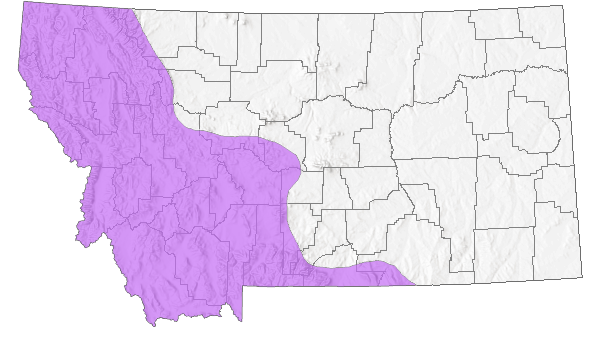
 Native
Native
Range Comments
AK to NL south to WA, UT and CO (Lesica et al. 2012. Manual of Montana Vascular Plants. BRIT Press. Fort Worth, TX).
Observations in Montana Natural Heritage Program Database
Number of Observations: 68
(Click on the following maps and charts to see full sized version)
Map Help and Descriptions
Relative Density
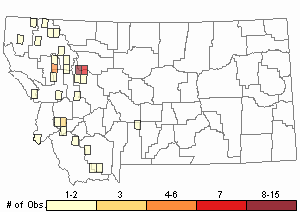
Recency
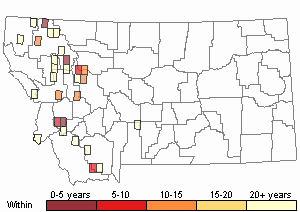
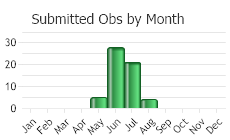
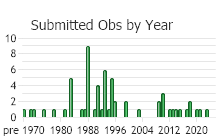
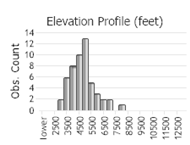 (Observations spanning multiple months or years are excluded from time charts)
(Observations spanning multiple months or years are excluded from time charts)
Habitat
Grows in seepy, marshy places along cold-air drainages, often where calcareous.
National Vegetation Classification System Groups Associated with this Species
Forest and Woodland
Montane - Subalpine Forest and Woodland
Wetland and Riparian
Riparian and Wetland Forest
Stewardship Responsibility
References
- Literature Cited AboveLegend:
 View Online Publication
View Online Publication Lesica, P., M.T. Lavin, and P.F. Stickney. 2012. Manual of Montana Vascular Plants. Fort Worth, TX: BRIT Press. viii + 771 p.
Lesica, P., M.T. Lavin, and P.F. Stickney. 2012. Manual of Montana Vascular Plants. Fort Worth, TX: BRIT Press. viii + 771 p.
- Additional ReferencesLegend:
 View Online Publication
View Online Publication
Do you know of a citation we're missing? Culver, D.R. 1994. Floristic analysis of the Centennial Region, Montana. M.Sc. Thesis. Montana State University, Bozeman. 199 pp.
Culver, D.R. 1994. Floristic analysis of the Centennial Region, Montana. M.Sc. Thesis. Montana State University, Bozeman. 199 pp. Lesica, P., M.T. Lavin, and P.F. Stickney. 2022. Manual of Montana Vascular Plants, Second Edition. Fort Worth, TX: BRIT Press. viii + 779 p.
Lesica, P., M.T. Lavin, and P.F. Stickney. 2022. Manual of Montana Vascular Plants, Second Edition. Fort Worth, TX: BRIT Press. viii + 779 p.
- Web Search Engines for Articles on "Northern Twayblade"





